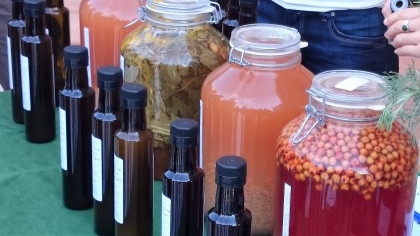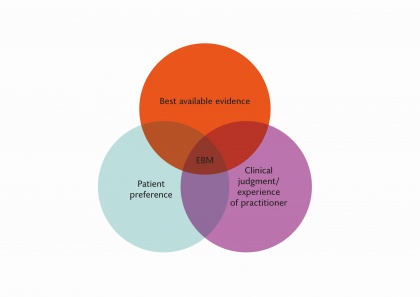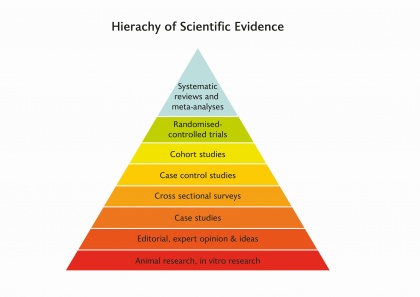Using CAM products & consulting CAM practitioners
In this Learning Pathway, we look at CAM products, the industry that provides them and the people who these products and services. Finally, we consider how to investigate the impact of CAM products and services on our health - introducing Evidence-based Medicine (EBM).
H5P Object Parameters
The H5P parameters below will be replaced by the actual H5P object when it's rendered on the WordPress site to which it's been snapshotted.
3
gfs101
100%
400px
font-weight: bold;
class1 class2
Complementary Medicine Products
Let's start with a looking at what Complementary Medicines have been called in the past.
H5P Object Parameters
The H5P parameters below will be replaced by the actual H5P object when it's rendered on the WordPress site to which it's been snapshotted.
4
gfs101
100%
400px
font-weight: bold;
class1 class2
Now that vitamins and herbs are used by 2/3 Australian population, should it be called healthcare, or is it still quackery? Feel free to share your thoughts on the Course Feed
What are vitamins, herbal remedies and food supplements?
About Vitamins
- They are organic compounds found in food, that are necessary for good health in very small amounts
- Many cannot be synthesised by the body
- Ideally we get sufficient amounts from eating a good diet
- Individual vitamins are characterised by a capital V and a letter and/or number – eg Vitamin C, Vitamin B12, and so on</big>
About Herbal medicines
- These are plant medicines, which may include any part of a plant. Usually only one (specified) part of a plant is used medicinally.
- They are chemically highly complex
- They may be flowers, seeds, leaves, barks, roots
About Food supplements
European Union definition - European Food Safety Authority
- Food supplements are concentrated sources of nutrients or other substances with a nutritional or physiological effect, whose purpose is to supplement the normal diet.
- Functional foods claim to have health benefits beyond their nutritional value.
So, when a substance is swallowed and makes health claims - is it a medicine or food? Let us know your thoughts on the Course Feed
The Complementary Medicines Industry
Complementary Medicines Australia is the peak body representing those involved in the production of complementary medicines in Australia. From their website, have a look at About Us and the CMA Industry Audit 2017, and answer the following questions:
H5P Object Parameters
The H5P parameters below will be replaced by the actual H5P object when it's rendered on the WordPress site to which it's been snapshotted.
5
gfs101
100%
400px
font-weight: bold;
class1 class2
From the content of last learning path and this one, explain in your own words what you understand by the term 'complementary medicine' and its origins. What stands out for you as something significant that you have learned about complementary medicine in these initial weeks of the unit?
Note: Your comment will be displayed in the course feed.
How do we investigate the impact of CAM products and services?
Given the numbers of people using it, given the size of the CAM market, we must ask - what benefit does CAM bring? do these products and therapies work? How do we know whether or not they are effective?
In scientific terms, the question is - 'where's the evidence?' Critics of CAM claim that there is little or no evidence to back up claims made for its efficacy, supporters of CAM claim that they work. The reason that many (not all) medical practitioners 'disapprove' of CAM is because they believe that it lacks evidence, or that it can be dangerous.
We will be looking at the nature of evidence and some of the debates around it in learning pathway. However it is a big issue, and we are giving you some introductory material about it here.
What is Evidence-based medicine (EBM)?
Since the 1990s, conventional medicine has increasingly emphasised the need to use medical research which has been published in peer-reviewed journals as the basis for the clinical care of patients. This is known as Evidence-based medicine, which is also known as Evidence-based practice.
We'lll start of with a short (2 minute) introduction to EBM, and then look in more detail at the levels of evidence and what each of them means. This may be information that you will come back to in later weeks of the course, and when you start your second assignment.
So what is EBM? This short video gives an overview. It is intended for health professionals, but it is clearly presented and an understanding of this is necessary for the context of understanding the safe and appropriate use of CAM medicines.
The Hierarchy of Evidence
The video above referred 'the research'. This refers to research which has been published in peer-reviewed journals, and it can take a number of forms. The pyramid as illustrated below, indicates the hierarchy in terms of what is seen as the most reliable evidence to the least reliable evidence.
The below gives an introductory explanation of the hierarchy of evidence.
Reid, R., et al. (2016). "Complementary medicine use by the Australian population: a critical mixed studies systematic review of utilisation, perceptions and factors associated with use." BMC Complementary and Alternative Medicine 16: 176.





